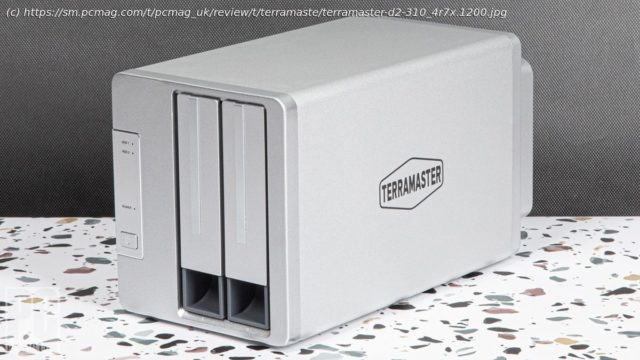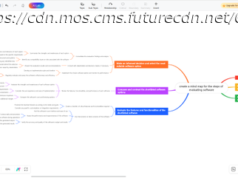Solid barebones DAS gets you into the RAID game
The TerraMaster D2-310 is an enclosure that houses two SATA hard drives or SSDs and supports a basic RAID array, as well as a couple of non-RAID modes. The D2-310 connects directly to a computer via USB, rather than a network as you would find in network-attached storage (NAS). Setup is simple for the D2-310, and the process for switching between modes, if needed, is straightforward. If you’re fine with sticking to RAID 0 or RAID 1 and don’t need network storage, the D2-310 is a good choice for a simple DIY multidrive array that sits on your desk. Keep in mind, though, that the price, while low, is just for the chassis; you have to supply the drives. An Enclosure for a Simple RAID Array As an enclosure, the D2-310 does not include any drives. With bays for a pair of drives, the D2-310 supports RAID 0 and RAID 1. For more exotic RAID flavors such as RAID 5,6, or 10, in which you would yoke together additional drives, you would need an enclosure with more drive bays. RAID, an acronym for redundant array of independent drives, is a way to array multiple drives so that they work together. While RAID 1 offers redundancy through mirroring, copying the same data to each of the drives, RAID 0 uses «striping» to spread data across the drives, increasing capacity and performance, but at the expense of fault tolerance: Should one drive in a RAID 0 fail, you lose all the data in the array. As it ships, the D2-310 measures 5.3 by 4.7 by 9 inches (HWD) and weighs 2.9 pounds; whatever drives you add will, of course, increase the weight. The silver-colored enclosure is made of aluminum, and feels very sturdy. In front are the vertically oriented bays for the two drive trays. To its left is the power button, above which are three tiny status lights, one for power and the other two for the status of each drive. To remove a tray, you pull up on its latch while pressing down on a part of the tray at the bottom.






